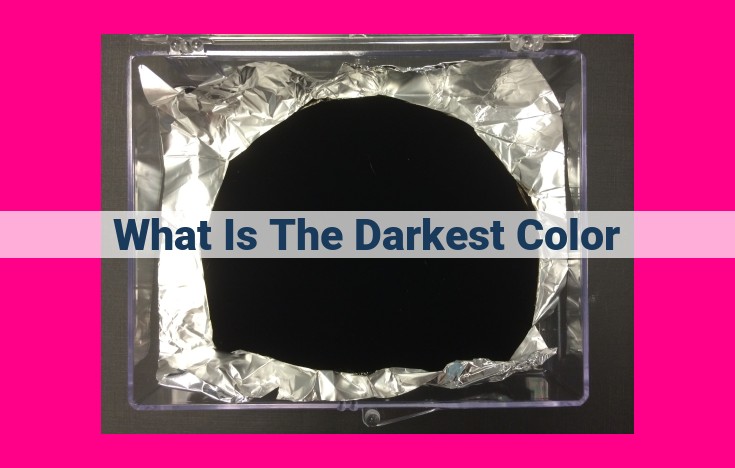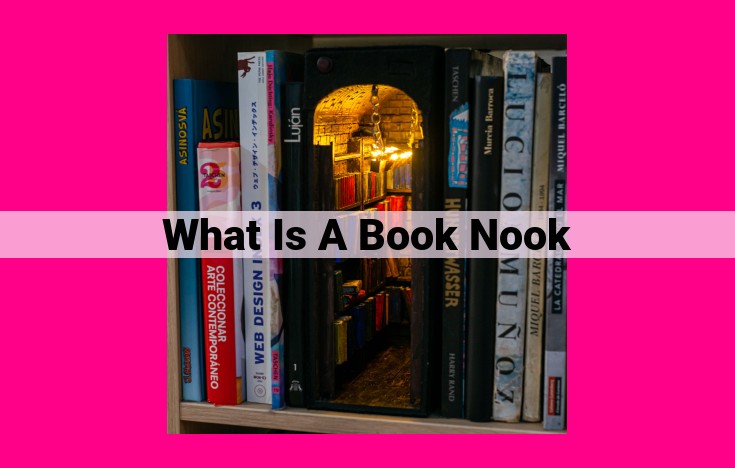Unveiling The Enigmatic Nature Of Black: Symbolism, Psychology, And Cultural Significance

Black, the darkest color, comes in various shades like absolute black and jet black, each with unique characteristics. Associated with mystery, darkness, and mourning, black holds cultural significance and is often linked to animals like black cats and ravens. In literature and film, black is used to convey themes of fear, sadness, and death, while in fashion, it exudes elegance, versatility, and sophistication. Psychologically, black can impact mood and behavior, and its meaning varies across cultures, signifying different interpretations and symbolism worldwide.
Journey into the Shades of Black: A Tapestry of Darkness and Depth
The chromatic symphony of black unveils a vast spectrum of shades, each with its own symphony of associations and meanings. Let us delve into the shadowy realm of this enigmatic hue.
Absolute Black: The Absence of Light
Absolute black, the purest form of darkness, represents the utter absence of light. It engulfs and conceals, creating an enigmatic void that provokes both awe and unease.
Ivory Black: A Hint of Light Amidst Darkness
Ivory black, a shade tinged with a whisper of gray, evokes a subtle elegance. It balances the drama of absolute black with a touch of light, making it an intriguing choice for both artistic expression and sophisticated design.
Jet Black: Intensity Incarnate
Jet black, as deep and intense as the night sky, radiates power and authority. It commands attention, accentuating both form and detail. This uncompromising hue is often associated with formality, professionalism, and a touch of mysterious allure.
Common Associations with Black
Throughout history and across cultures, the color black has carried a multitude of symbolic meanings. It is often associated with the unknown and the mysterious, shrouded in an aura of darkness and intrigue. In religion and mythology, black frequently represents evil and sin, symbolizing the absence of light and goodness. Ancient Egyptians, for instance, associated black with the underworld and the god of chaos and darkness, Set.
Black has also long been a hue associated with mourning and grief. In many cultures, people wear black clothing or adorn themselves with black accessories to express their sorrow and loss. This symbolism stems from the belief that black absorbs all light and energy, representing a void or absence.
Furthermore, black has been linked to authority and power. In many societies, judges, lawyers, and other figures of authority wear black robes or uniforms to convey a sense of seriousness and command. This association is often attributed to the color’s association with mystery and the unknown.
Animals Associated with Black
Throughout history, the color black has held a profound fascination for us, evoking a myriad of emotions and cultural associations. In the animal kingdom, black has also played a significant role, imbuing certain creatures with an air of mystery and intrigue.
Black Cats
The association between black cats and bad luck or witchcraft has its roots in ancient superstitions. In medieval Europe, black cats were believed to be the familiars of witches, leading to their persecution and widespread fear. However, in other cultures, such as ancient Egypt, black cats were revered as symbols of protection and good fortune.
Ravens
Ravens have long been associated with death and darkness. In Norse mythology, the raven was the messenger of the god Odin, carrying messages between the realms of the living and the dead. In Victorian literature, ravens often appear as omens of doom, adding an eerie atmosphere to tales of mystery and suspense.
Crows
Similar to ravens, crows have also been connected to death and misfortune. In some cultures, they were believed to foretell the arrival of bad news or the death of a loved one. However, crows are also intelligent and adaptable birds, and in recent years, their reputation has begun to improve.
Beyond these well-known associations, many other animals sport black fur or plumage. Black panthers symbolize power and stealth, while black snakes often elicit fear or reverence. Black bears exhibit a calm and solitary nature, and black stallions are symbols of strength and nobility.
The meaning of black varies depending on the animal in question and the cultural context. However, one thing remains constant: black animals have captured our imagination and sparked our fascination for centuries, adding a touch of mystery and intrigue to the natural world.
Black in Literature and Film: Unveiling the Palette of Darkness
Immerse yourself in the evocative power of black as it paints vivid strokes across the tapestry of literature and film. Throughout history, authors and filmmakers have harnessed this enigmatic hue to convey a vast array of themes, emotions, and character traits that resonate deeply with audiences.
Themes of Mystery and Darkness
Black evokes a sense of mystery and intrigue, drawing readers and viewers into hidden worlds filled with secrets and uncertainty. In Edgar Allan Poe’s “The Raven,” the narrator’s descent into madness is paralleled by the ubiquitous presence of the black bird, creating an atmosphere of foreboding and despair. Similarly, in Bram Stoker’s “Dracula,” the vampire’s castle is shrouded in darkness, symbolizing the evil that lurks within.
Expressions of Emotion
Black can also express profound emotions, such as grief, anger, and melancholy. In Shakespeare’s “Hamlet,” the titular character wears black to mourn the death of his father, his attire reflecting the darkness that has consumed his soul. In the film “The Color Purple,” the protagonist Celie’s journey towards self-discovery is visually represented by her transition from wearing drab, black dresses to vibrant colors, symbolizing her liberation from oppression.
Character Traits and Development
Black is often used to depict _complex and enigmatic characters. In the novel “Moby-Dick,” Captain Ahab’s obsession with the white whale is juxtaposed with his own darkness, represented by the black of his ship and his harpoon. In the film “The Lord of the Rings,” the Dark Lord Sauron embodies the malevolence of black, while the Fellowship of the Ring represents the hope and light that can triumph over it.
Black has proven to be an indispensable color in literature and film, evoking a wide range of emotions, themes, and character traits. Its ability to create atmospheres of mystery, convey deep emotions, and symbolize complex characters makes it a storytelling tool that continues to inspire and captivate audiences worldwide.
Black: A Timeless Classic in Fashion and Design
Black, the darkest of all colors, has captivated the world of fashion and design for centuries, captivating with its versatility, elegance, and timeless appeal. Whether it’s a sharp suit, a flowing gown, or a sleek piece of furniture, black exudes sophistication and power.
Versatility and Practicality
Black’s versatility is unparalleled. It can adapt to any style, from minimalist and modern to eclectic and bohemian. Its neutrality allows it to be paired effortlessly with any color or pattern, making it a staple in every designer’s palette. Moreover, black’s functionality is undeniable. It conceals dirt and wear, making it the perfect choice for everyday wear and heavy-traffic areas.
Elegance and Sophistication
Black is synonymous with elegance. It adds an air of sophistication to any outfit, whether it’s a formal gown or a tailored tuxedo. Its ability to flatter all skin tones and body types makes it a universal choice for special occasions. In interior design, black accents add a touch of luxury and glamour, creating a sense of intimacy and drama.
Timelessness and Enduring Appeal
Black defies trends and remains a constant in fashion and design. It’s the color of the “little black dress,” a wardrobe essential that never goes out of style. The enduring appeal of black lies in its ability to convey both mystery and allure, creating a lasting impression that transcends time.
In the realm of fashion and design, black reigns supreme. Its versatility, elegance, and timelessness have made it a beloved choice for centuries. Whether it’s a chic outfit or a stunning piece of furniture, black adds a touch of sophistication and drama that never fails to impress. Embrace the timeless allure of black and let it elevate your style and décor to new heights.
The Enigmatic Impact of Black: Unveiling its Psychological Influence
The enigmatic allure of black captivates us, evoking a myriad of emotions and sensations. But what lies beneath its somber exterior? Research delves into the profound impact this color wields over our moods, perceptions, and behaviors. Let’s embark on a journey to decipher the psychological mysteries of black.
Mood and Emotion
Black often conjures up a somber atmosphere, fostering a sense of mystery, intrigue, and even melancholy. Studies have shown that exposure to black can trigger negative emotions, such as anxiety, depressiveness, and withdrawal. However, black can also convey elegance, sophistication, and a touch of rebellion.
Perception and Cognition
Our brains process black differently from other colors. It’s often perceived as dominant, receding, and mysterious. Research suggests that black can enhance focus, reduce distractions, and create a sense of intimacy. In design, black backgrounds can make objects appear more prominent, drawing attention to key elements.
Behavior and Impulse
Surprisingly, black has been linked to increased impulse spending. One theory posits that the sophisticated and exclusive nature of black products evokes a sense of desirability, leading to more impulsive purchases. Additionally, research has shown that people dressed in black may be perceived as more assertive, confident, and authoritative.
Cultural Variations
The psychological impact of black varies across cultures. In many Western cultures, it’s associated with mourning, death, and the unknown. However, in some Eastern cultures, black represents power, wealth, and wisdom. It’s essential to consider cultural context when interpreting the psychological effects of black.
The enigmatic nature of black influences our moods, perceptions, and behaviors in profound ways. Its somber qualities can evoke negative emotions, but it also conveys elegance, sophistication, and a touch of mystery. Understanding the psychological impact of black empowers us to harness its power in various aspects of our lives, from fashion to design to personal interactions.
Cultural Variations in Black’s Meaning
- Highlight how the meaning of black can vary across cultures, providing examples of different interpretations and symbolism.
Cultural Variations in Black’s Meaning
Across cultures, the color black holds a multifaceted symbolism that transcends its visual appeal. In some societies, *black is imbued with a profound sense of mystery and the unknown*. It evokes images of the night sky, the vast expanse of outer space, and the depths of the ocean. In ancient Egyptian culture, for instance, black was associated with the afterlife and the god of the underworld, Osiris.
Conversely, in Western cultures, black has *often been associated with negativity*. It has come to represent *mourning, evil, and darkness*. This association is perhaps rooted in the fear of the unknown and the darkness that can conceal danger. In some cultures, black is also associated with bad luck or misfortune, as seen in the superstition that crossing paths with a black cat brings bad luck.
In contrast, in many African cultures, *black is a symbol of power, strength, and beauty*. The Zulu people of South Africa, for example, consider black to be the color of royalty and regard it with great respect. In some Native American cultures, black represents the night and the feminine principle, symbolizing knowledge and wisdom.
The meaning of black can also vary depending on its context. In fashion, black is often seen as a *sophisticated and elegant color*. It exudes a sense of mystery and intrigue, making it a popular choice for formal attire. In art, black can convey a wide range of emotions, *from sadness and despair to power and intensity*.
In conclusion, the meaning of black is *fluid and multifaceted, varying across cultures, contexts, and individual perceptions*. It is a color that evokes a range of emotions and interpretations, *reflecting the richness and diversity of human experience*. Understanding these cultural variations helps us appreciate the *complexity and symbolism of this enigmatic color*.





